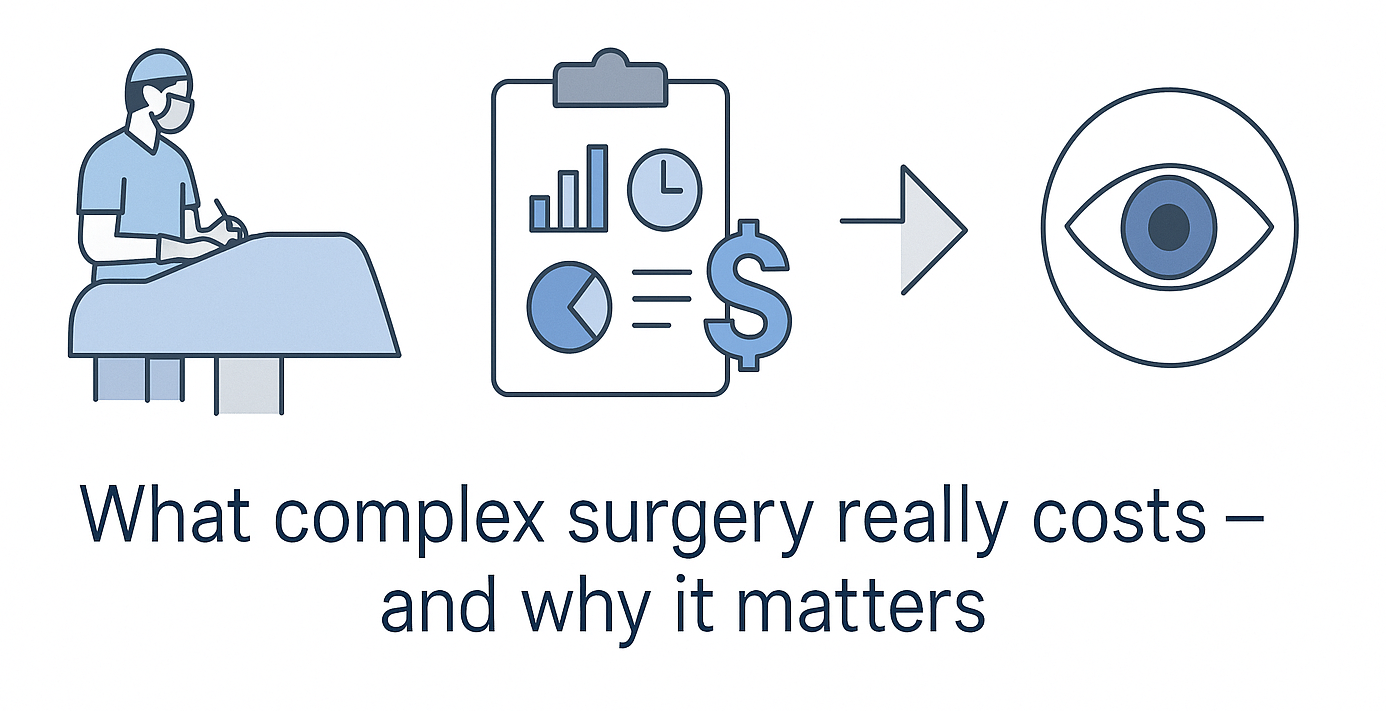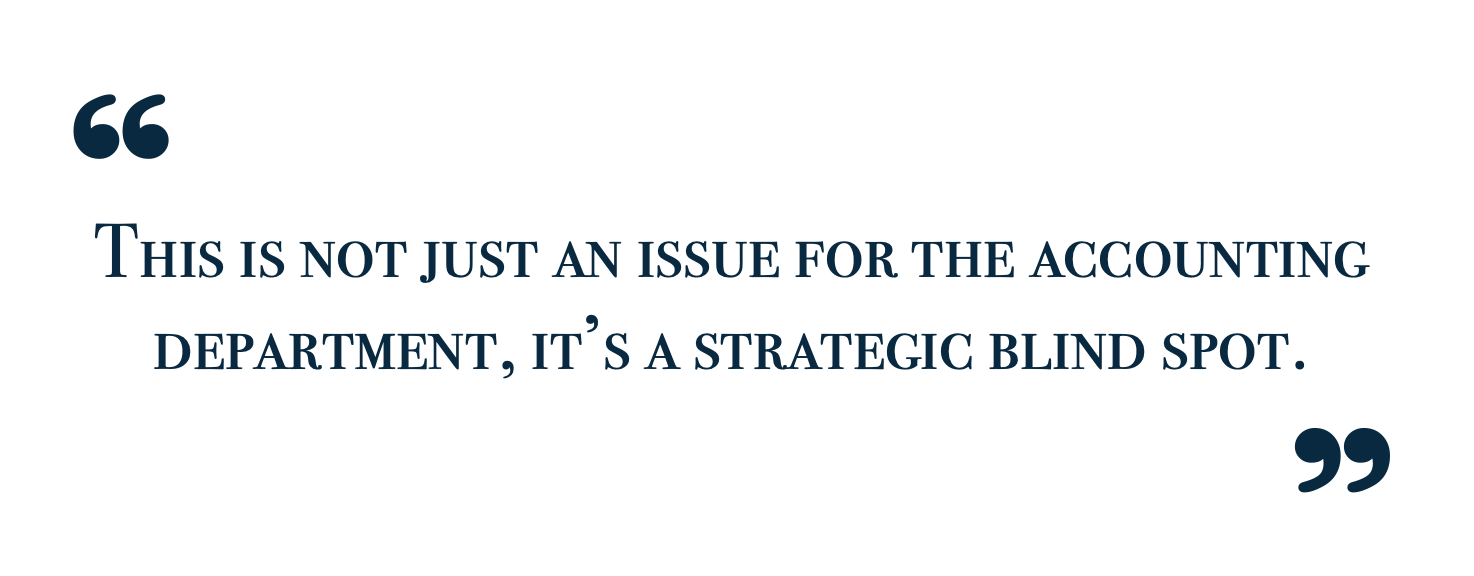What complex surgery really costs - and why it matters
When complex surgeries lose money… and no one notices
At a leading academic eye center, we asked a simple question: How much does surgery really cost? Not based on guesswork, RVUs, or reimbursements – but on real-time staff involvement, room usage, and material costs. This was harder to do than you might think. Most health systems do not have a great way of calculating costs, even from a resource as expensive and important as the operating room (OR).
In order to answer the question, we pioneered a string of studies using Time-Driven Activity-Based Costing (TDABC). In these studies, we uncovered a consistent pattern – one that many surgeons understand but had yet to quantify: the more complex the surgery, the greater the hidden financial loss.
In cataract surgery, the most commonly performed surgery, we found that complex cataract surgery, which accounts for 10-15% of cases, costs on average $877 more than simple cases. However, Medicare reimbursement does not adequately account for this difference – there was only an estimated $231 more in payment, leading to a relative loss of nearly $650 per complex case.
These changes were seen in other common ophthalmic surgeries, notably with retinal detachment repair. Complex vitrectomy (the surgery used for most retinal detachments) costs over $2,700 more per case than standard vitrectomy. Reimbursement, however, was only about $500 more for complex cases.
Why this matters for healthcare organizations
These aren’t niche surgeries tucked away in academic centers – cataract removal and retinal detachment repair are foundational to modern ophthalmology. They happen every day, in nearly every setting. But across the country, health systems are operating without a clear picture of what these procedures actually cost.
This is not just an issue for the accounting department, it’s a strategic blind spot. When complex cases consume more time, tools, and expertise but generate only marginally higher reimbursement, hospitals and providers absorb those costs without even realizing it. The result is a distorted system that quietly disincentivizes high-quality care for the patients who need it most. Surgical schedules grow tighter, budgets more fragile, and physicians more frustrated.
TDABC puts numbers to what we’ve long suspected: doing the right thing can cost more – and get reimbursed less. But once you can see the loss, you can do something about it.
How EyeQ Can Help
EyeQ Consulting helps health systems close the gap between clinical effort and financial understanding. Our TDABC methodology is built for real-world practice (not only for research). It captures what actually happens in the OR, not what’s on paper. That means identifying where resources are overused, where complexity is underpaid, and where change is possible. And we want to help you utilize it with the data and infrastructure you have.
We work with academic hospitals, private ASCs, and group practices alike to uncover their true cost structure. Armed with those insights, leaders can advocate for reimbursement reform, redesign OR workflows, and make better decisions about patient mix and procedural strategy.
If your system doesn’t know how much its surgeries really cost, it’s time to find out.
Sources
Portney DS, Berkowitz ST, Garner DC, Qalieh A, Tiwari V, Friedman S, Patel S, Parikh R, Mian SI. Comparison of Incremental Costs and Medicare Reimbursement for Simple vs Complex Cataract Surgery Using Time-Driven Activity-Based Costing. JAMA Ophthalmol. 2023 Apr 1;141(4):358-364. doi: 10.1001/jamaophthalmol.2023.0091. PMID: 36892825; PMCID: PMC9999278.
Pan WW, Portney DS, Mian SI, Rao RC. The Cost of Standard and Complex Pars Plana Vitrectomy for Retinal Detachment Repair Exceeds Its Reimbursement. Ophthalmol Retina. 2023 Nov;7(11):948-953. doi: 10.1016/j.oret.2023.06.021. Epub 2023 Jul 1. PMID: 37399975; PMCID: PMC11186401.



